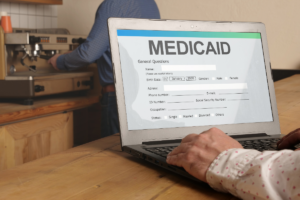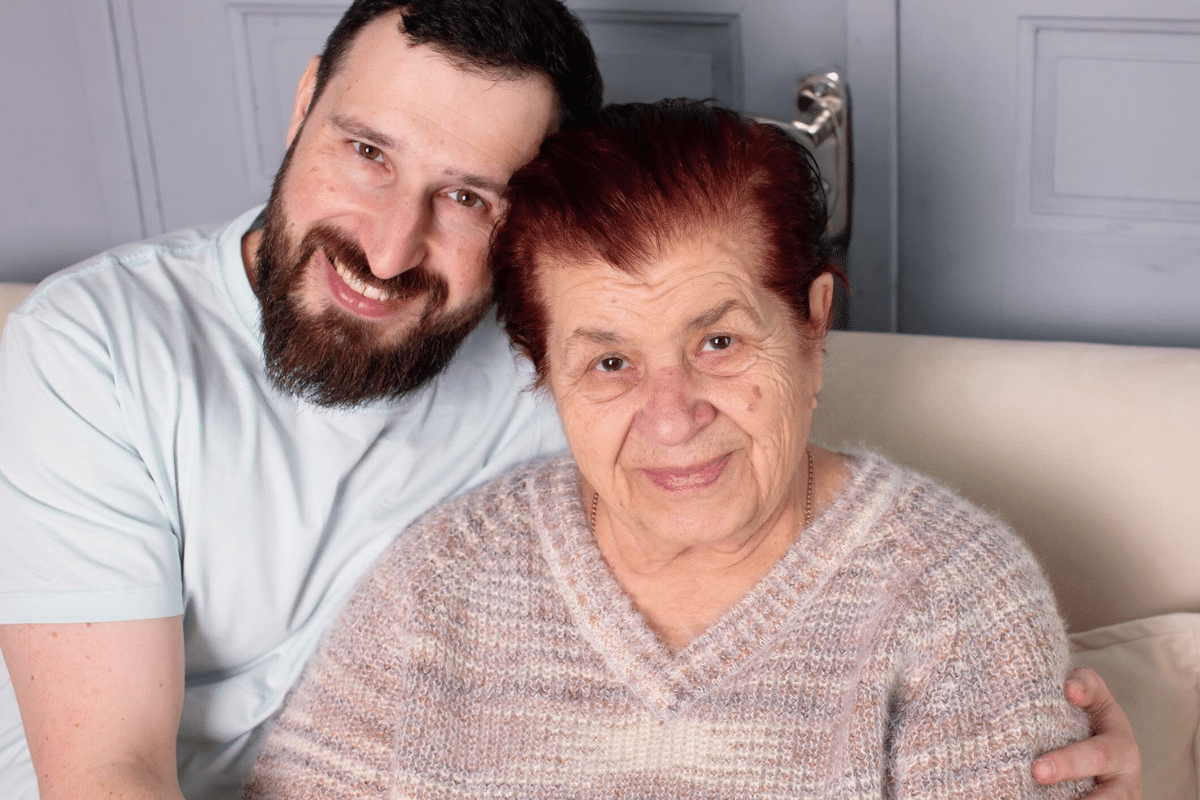The aging U.S. population means that more people will likely need nursing home care in…

These protections, known as the Spousal Impoverishment Standards, help to support the financial well-being of seniors who continue residing at home while their spouse on Medicaid lives in a long-term care facility, such as a nursing home.
How Can I Qualify for Medicaid Long-Term Care Benefits?
Long-term care is prohibitively expensive for many, so a large share of adults aged 65 and older rely on Medicaid to help cover the costs.
To qualify for Medicaid long-term care benefits, however, one must generally have very limited resources. In New York, the asset limit is currently set at $30,182. (Certain assets, such as personal belongings and the applicant’s primary residence, do not count toward this limit.) The applicant’s income typically goes to the nursing home as well, with some exceptions.
So, what happens if a person who qualifies for Medicaid long-term care is married? How can their healthy spouse afford to remain in their own at home? This is where the Spousal Impoverishment guidelines help.
What are the 2024 Spousal Impoverishment Figures?
Note that most of the latest figures, outlined below, went into effect January 1, 2024.
Community Spouse Resource Allowance (CSRA)
A spouse who continues living at home while their partner receives long-term care coverage through Medicaid can keep up to $154,140 in assets starting in 2024.
The healthy spouse, or so-called “community spouse” then has a minimum amount of assets to live on without rendering their Medicaid spouse ineligible for benefits. This special protection is known as the Community Spouse Resource Allowance (CSRA). The maximum CSRA generally rises each year. For reference, in 2023 it was $148,620.
Meanwhile, according to federal law, no state can set the minimum CSRA below $30,828 as of 2024.
Monthly Maintenance Needs Allowance (MMNA)
In addition to CSRA, the federal government offers another level of protection for the community spouse: the Monthly Maintenance Needs Allowance (MMNA).
The MMNA ensures that the healthy spouse who continues to live in the couple’s home maintains a certain amount of monthly income while their partner receives their Medicaid long-term care coverage. (Learn more about the ins and outs of MMNA.)
In 2024, the maximum MMNA will be $3,853.50 (up from $3,715.50 in 2023). Again, this is the most in monthly income that the community spouse can keep while their spouse lives in a long-term care institution. If the healthy spouse does not make enough income to live on, this allowance comes from the income of the spouse on Medicaid.
Note that the minimum MMNA for 2024 can vary depending on your state. Alaska and Hawaii typically have slightly higher minimums. The federal government updates the minimum MMNA each July.
What are Income Cap States?
Certain states have in place a Medicaid income cap. If you reside in one of these income cap states, you will not qualify for Medicaid if your income equals more than $2,829 (in 2024) – unless you have a certain type of trust in place. This trust, known to many as a Miller Trust, must hold any income you receive that is above that cap.
As of 2023, the 23 income cap states are Alabama, Alaska, Arizona, Arkansas, Colorado, Delaware, Florida, Georgia, Idaho, Iowa, Kentucky, Louisiana, Mississippi, Nevada, New Mexico, New Jersey, Oklahoma, Oregon, South Carolina, South Dakota, Tennessee, Texas, and Wyoming.
Are their Medicaid Home Equity Limits?
As mentioned above, Medicaid does not consider the primary home of an applicant as a countable asset, unless the applicant’s equity interest in their home is above a certain amount.
Your home equity equals your home’s value minus the sum of any loans you owe on the home. In 2024, the home equity limit is set to $713,000. (Some states choose to raise this limit. New Yorks has imposed a limit of $1,071,000.)
Access the 2024 Spousal Impoverishment Rules via the Medicaid website.
Planning for Medicaid and navigating the Medicaid application process can be daunting. For expert assistance, please do not hesitate to contact our office at 1 (800) 680-1717. We look forward to the opportunity to work with you.




Comments (0)